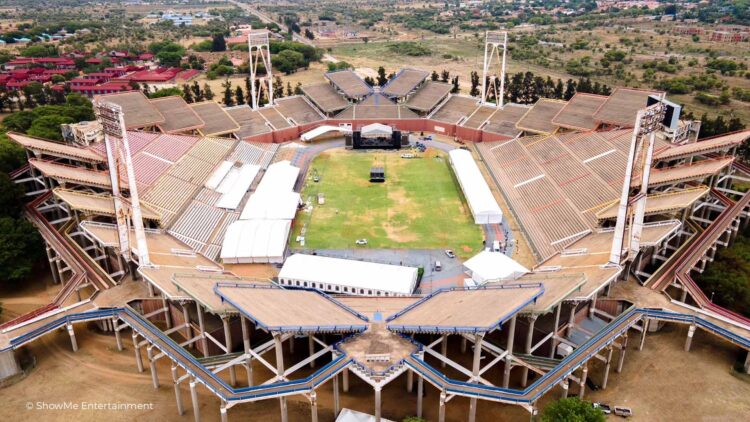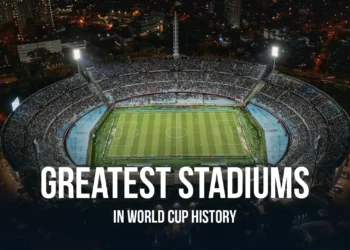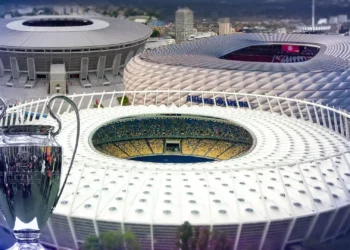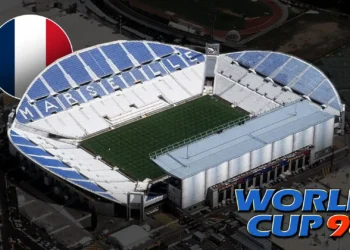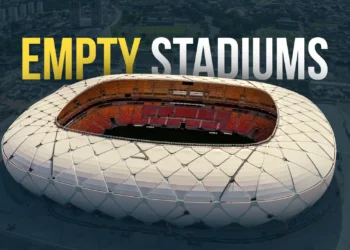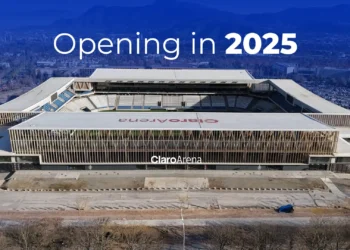Nestled in the heart of Mafikeng, North West Province of South Africa, Mmabatho Stadium stands out not only for its purpose but also for its unusual and striking design. This multi-purpose stadium, with a capacity of 59,000, is a fascinating example of unconventional architecture in sports venues.
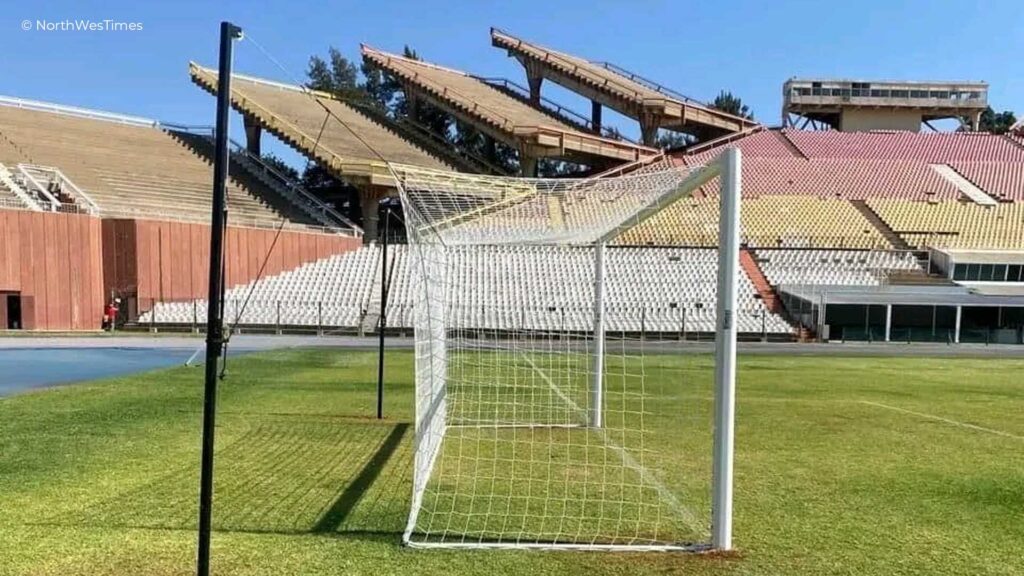
Architectural Oddity
Built: 1981
Architect: Israeli architect
The first thing that captures attention about Mmabatho Stadium is its architectural design. Created by an Israeli architect, the stadium’s structure defies traditional stadium designs with its avant-garde and futuristic style. The most peculiar aspect of Mmabatho Stadium is its asymmetrical and almost erratic arrangement of stands. Unlike the typical oval or circular arrangement, the stands here are placed in a pattern that seems almost random, yet they provide excellent sightlines for spectators.
Structural Features
The stadium’s use of concrete and the unique structural elements contribute to its surreal appearance. The stands are set at varying heights and angles, creating an almost chaotic visual experience. This design was not just for aesthetics but also intended to provide an intimate viewing experience for spectators, ensuring that every seat has a good view of the field.
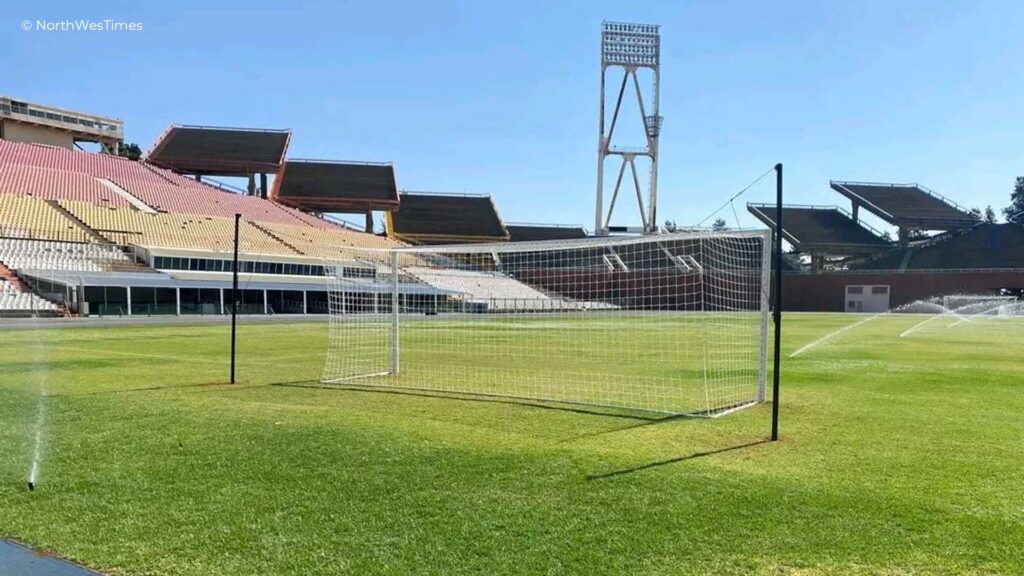
Historical Context
Constructed during the early 1980s, a politically complex era in South Africa’s history, Mmabatho Stadium was initially intended to be a symbol of regional pride for the then Bophuthatswana homeland. It served to boost the local sports infrastructure and provided a venue for numerous sports and community events.
Sporting and Cultural Events
Despite its strange appearance, Mmabatho Stadium has been a significant venue for various events:
Football
The stadium has hosted numerous football matches, including domestic league games, cup competitions, and even matches involving the South African national team, Bafana Bafana. It has also been a venue for local tournaments and youth games.
Athletics
In addition to football, the stadium accommodates track and field events, attracting athletes from across the region. Its facilities support a range of athletic activities, making it a versatile sports venue.
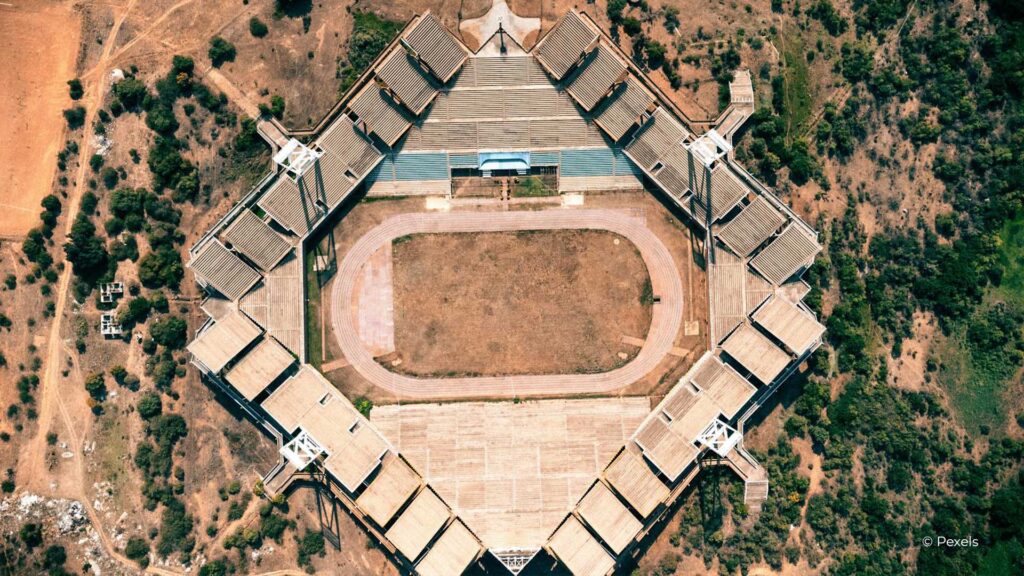
Challenges and Renovations
Over the years, Mmabatho Stadium has faced challenges related to maintenance and modernization. The aging infrastructure has required renovations to ensure the safety and comfort of spectators and participants. Efforts have been made to update facilities, improve seating, and enhance accessibility. These renovations aim to preserve the stadium’s historical and architectural significance while adapting it to contemporary standards.
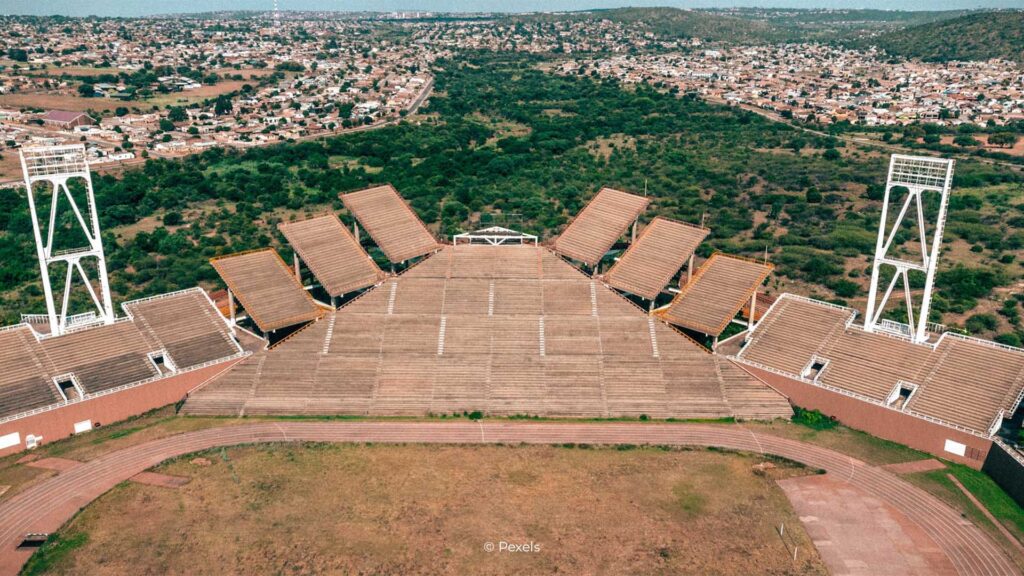
Future Prospects
Looking ahead, Mmabatho Stadium holds potential as a key venue for sports and cultural events in South Africa. Opportunities exist to further develop the stadium’s facilities, attract more high-profile events, and integrate it into broader urban development plans for Mafikeng. Its unique architecture and rich history make it a valuable asset that can contribute to the region’s tourism and economic development.

